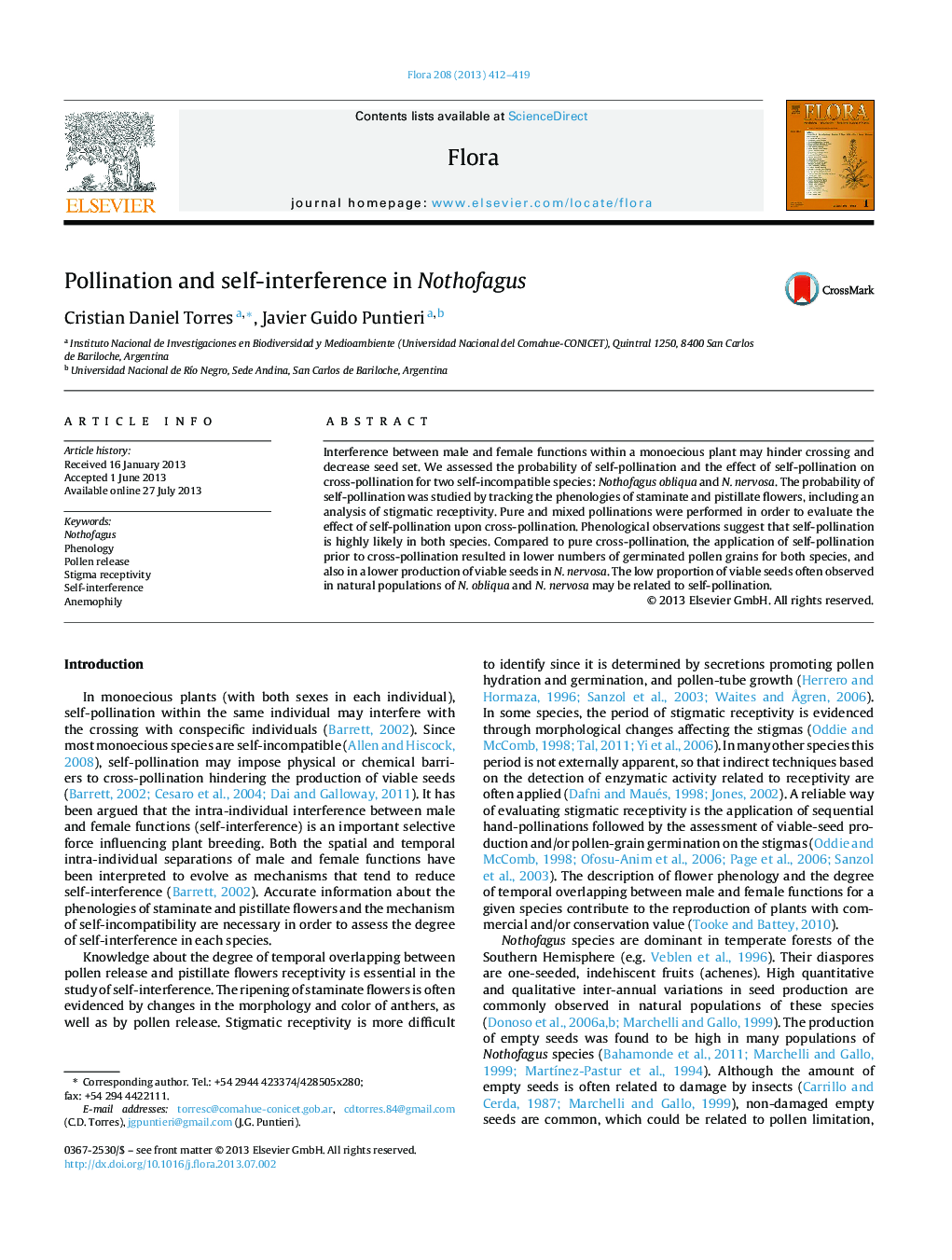| Article ID | Journal | Published Year | Pages | File Type |
|---|---|---|---|---|
| 2179671 | Flora - Morphology, Distribution, Functional Ecology of Plants | 2013 | 8 Pages |
Interference between male and female functions within a monoecious plant may hinder crossing and decrease seed set. We assessed the probability of self-pollination and the effect of self-pollination on cross-pollination for two self-incompatible species: Nothofagus obliqua and N. nervosa. The probability of self-pollination was studied by tracking the phenologies of staminate and pistillate flowers, including an analysis of stigmatic receptivity. Pure and mixed pollinations were performed in order to evaluate the effect of self-pollination upon cross-pollination. Phenological observations suggest that self-pollination is highly likely in both species. Compared to pure cross-pollination, the application of self-pollination prior to cross-pollination resulted in lower numbers of germinated pollen grains for both species, and also in a lower production of viable seeds in N. nervosa. The low proportion of viable seeds often observed in natural populations of N. obliqua and N. nervosa may be related to self-pollination.
